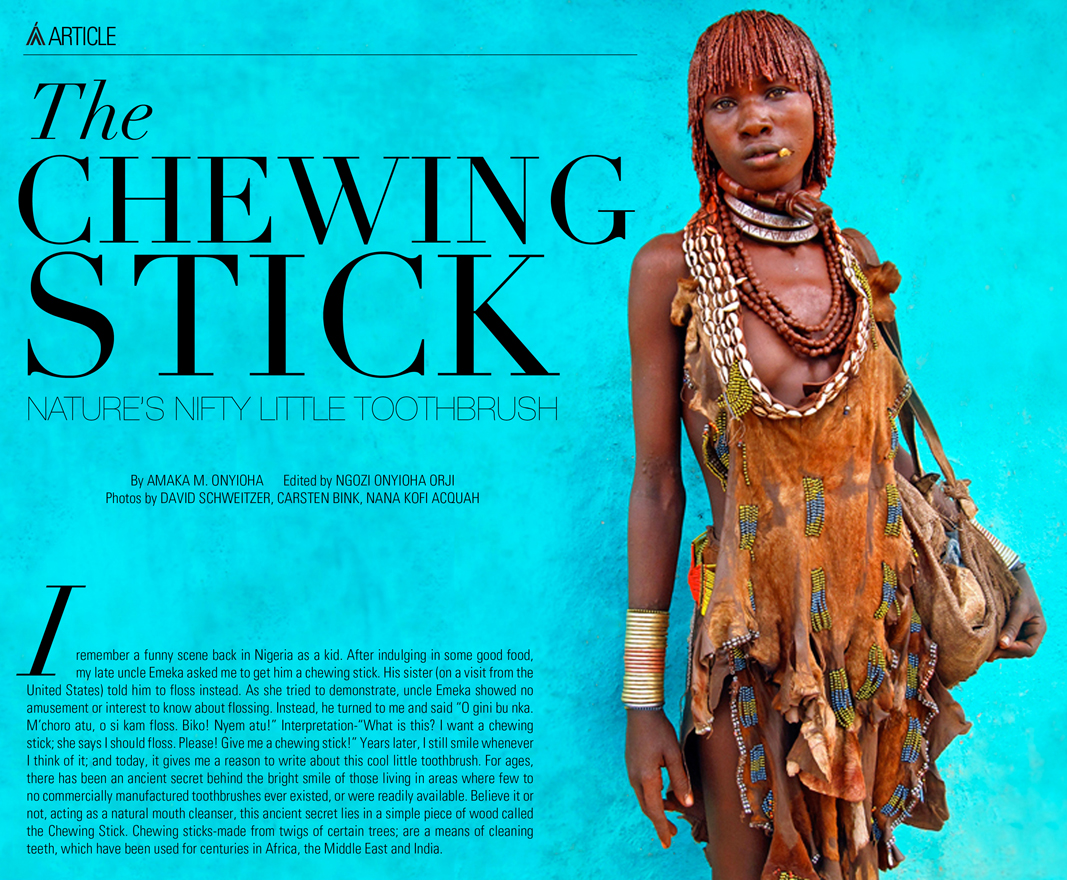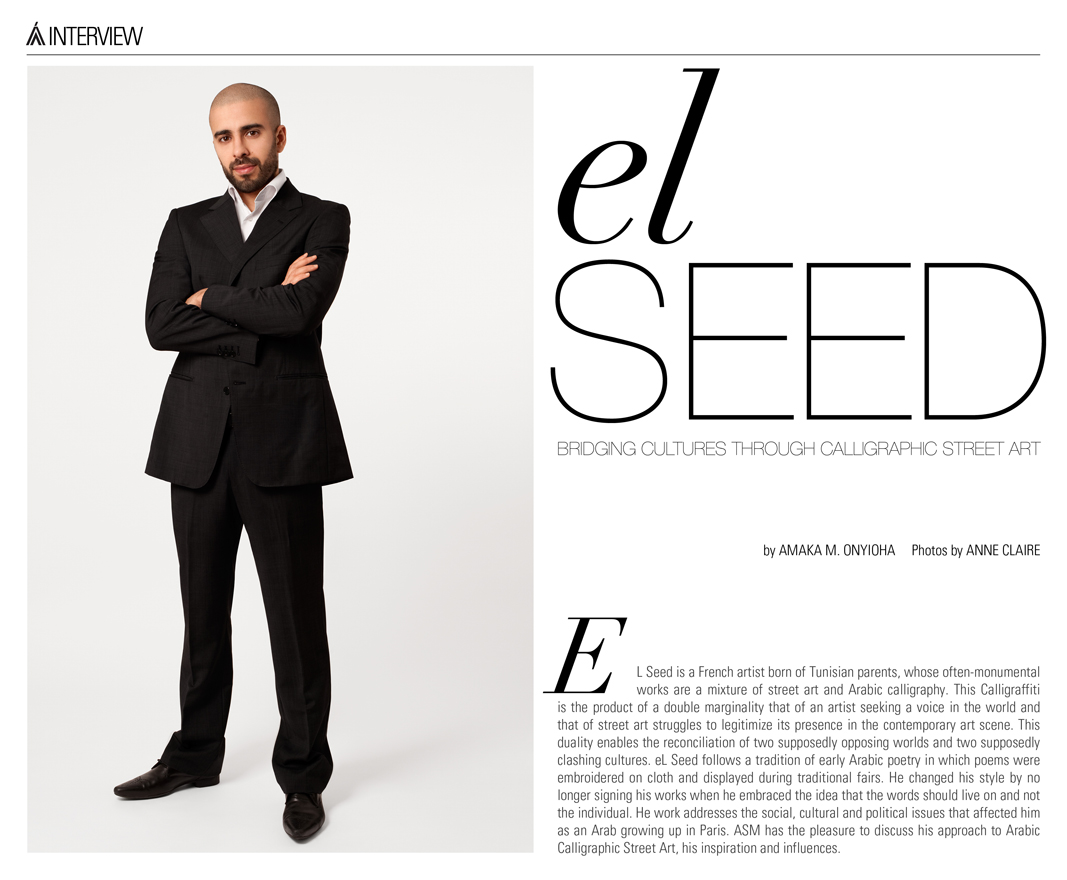
The Origin of the Chewing Stick.
Once used by the Babylonians (3500 B.C.), Egyptians, Greeks, and Romans, the chewing stick of old was simply a small wood "toothbrush" used in our predecessors' daily oral hygiene. Although Europeans once took advantage of this simple method, the chewing stick fell out of favor with them over three hundred years ago. Although the most common source of the chewing stick is the saltbush (also called toothbrush tree) in the Middle East, in West Africa, orange and lime trees are used, while the neem tree (neems) is the main source for chewing sticks in the Indian subcontinent. Astonishingly, nearly three hundred different species of trees and shrubs in East Africa are used in making chewing sticks! Chew sticks are usually nothing fancy--they are simply made out of frayed twigs. However, it depends on what kinds of twigs the chew sticks are made out of. According to some, twigs from the Salvadore Persica tree called the Miswak (also called siwak or miswaak) make the best kinds of chew sticks. Twigs that come from the licorice bush can also serve as the basis for making chew sticks.
"…there has been an ancient secret behind the bright smile of those living in areas where few to no commercially manufactured toothbrushes ever existed…"

Chewing Stick Usage
Through Africa or Asia, you may come across people casually chewing on a stick much like people may have a toothpick in their mouth. The twigs are generally cut to a thickness of a pencil; and are chewed until the end of the stick frays. The frayed end works like dental floss cleaning in between teeth keeping teeth and gums healthy. Once the end of a chew stick is frayed it can be rubbed on teeth, much like using a toothbrush, scrubbing food and plaque off teeth. Chew sticks are much less expensive than traditional western toothbrushes making them much more accessible. In Senegal, they are known as sothiou meaning to clean in the Wolof language and other parts of Eastern Africa. It is also known as the mswaki meaning "toothbrush" in Swahili. So how does the Chewing Stick work? Simply put, when the stick is chewed, the fibers at the end become loose, thereby forming a rough brush. Continued chewing loosens and dislodges particles between the teeth, which in turn stimulates blood circulation in the gums. Another benefit of the chew stick is that it increases saliva production, which in turn acts as a natural mouthwash that rinses away bacteria and creates an inhospitable environment for them to thrive and flourish.
According to Bella Online, research suggests there are inherent medical benefits in chewing sticks. The research points to the possibility that chewing sticks are full of medically helpful properties. Some of the medically helpful properties are things like abrasives, detergents, antiseptics, astringent, fluoride and enzyme inhibitors. Other studies have indicated that chewing on these sticks can be as effective as using toothbrushes and toothpaste to clean both gums, teeth, freshen breath (before and after meal time); and even are good for head and stomach problems. In fact, the World Health Organization (WHO) has recommended the usage of Miswak because the tree itself has antiseptic properties and it is comparable to other oral disinfectants and anti-plaque agents used today. Another more modern use for chew sticks is smoking cessation. It is reported that using a chew stick may reduce the need for a cigarette and may also slow the potential for weight gain while one is trying to stop smoking.
"…studies have indicated that chewing on these sticks can be as effective as using toothbrushes and toothpaste to clean both gums, teeth, freshen breath…"
More than just a brush, it was discovered that the twigs and roots of certain plant species used in making the chewing stick, contain chemical compounds that slow the formation of plaque. In addition, extracts of other sticks have proven to possess antibacterial and anti-fungal properties. For instance, the twigs of the aforementioned toothbrush tree have been found to help prevent ulcers. And in Namibia, chewing sticks made from a plant known as muthala, inhibit the growth of pathogens that cause gum disease, tooth decay, and sore throats. Chewing sticks possess the ability to prevent cavities, as well as strengthen the users' roots and gums.

Chewing Sticks Usage Today
Still popular in parts of Africa, Asia, and the Middle East, many have come to realize the amazing benefits of nature's nifty little toothbrush for many conclude chewing sticks work as well as the traditional toothbrush of today. So much so, that these little sticks are available online for those searching for a more natural way of keeping their teeth and gums healthy. So whether you opt for the more traditional method of brushing your teeth, or the more natural yet antiquated method, why not give this cool little toothbrush a try. Chew sticks are readily available in many flavors as well as unflavored on sites such as www.africaimports.com.
***Note: Anyone interested in using a chewing stick should make his/her own necessary inquiries before usage. AfroStyle Magazine is not responsible for anyone's decision to use chewing sticks without research and/or advise from a dentist.


